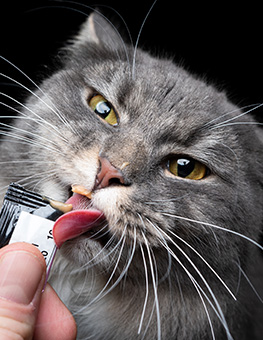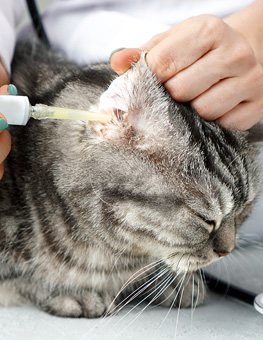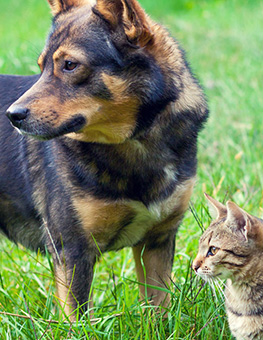Training Tip Tuesday: How to Housetrain Your Kitten
Adoption of a new kitten is very rewarding.
This week's tip provides guidance on making sure that when you bring your new kitty home; housetraining becomes an easy transition to his new home.
The relationship between a kitten and its mother is very important in creating the behavior a cat will display for the rest of its life. This is especially true in the instance of housetraining. A mother cat will train her kitten to use a litter box as soon as she is weaned. If you wait 12-14 weeks to bring your kitten home after birth, chances are it will already be housetrained!
If, however, you have rescued an orphan kitten or adopted a very young kitten, you will need to take the mother's place in the housetraining process. It likely will not come as naturally to you, so we have outlined the basic routine you should follow below.
- Your newborn or very young kitten (up to 3 weeks) needs to be stimulated to go just after he is fed. To do this, wet a warm washcloth or paper towel and gently rub his genital area until your kitten urinates and defecates. It is important to do this after each feeding. This may seem unusual, but since a very young kitten is unable to perform the bodily functions on his own, the mother (or human mother) must take over. Once the kitten is mobile (usually 4+ weeks), the instinct to dig and bury will usually take over and the process described above is not necessary.
- When your kitten starts to walk on his own and has begun to feed himself you can start introducing the litter box. Buy a box with a low lip so that your youngster can scramble over the top when he has to go. At first, you will probably need to place your kitten in the litter box a couple of times and scratch the litter with your finger. Do this immediately after feeding your kitten. You will be surprised how quickly he will learn that the litter box is his toilet.
- If your kitten is having trouble grasping this concept, you might have to either cage or confine him to a small room. The cage approach works best because if there is just enough room for a bed, water, food, and the litter box, your kitten will be forced to use the box. As confused as he may be at first, cats have strong instincts. When forced with a choice, he will realize quickly which spaces are for sleeping and eating and which are not.
If you take patience, time and care with your new kitten, you will find that he will be trained to use his litter box in no time!
For more information about caring for your cat check out our cat page.



















